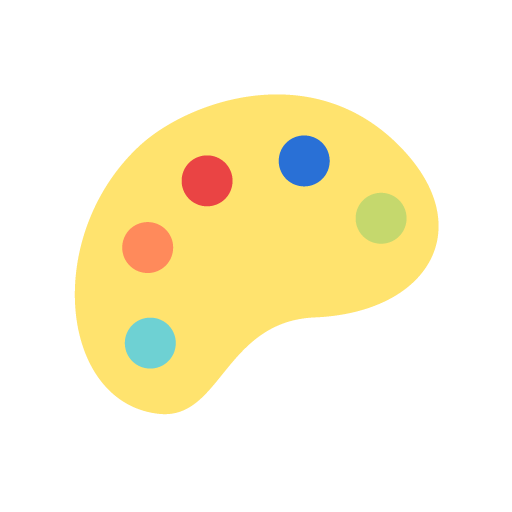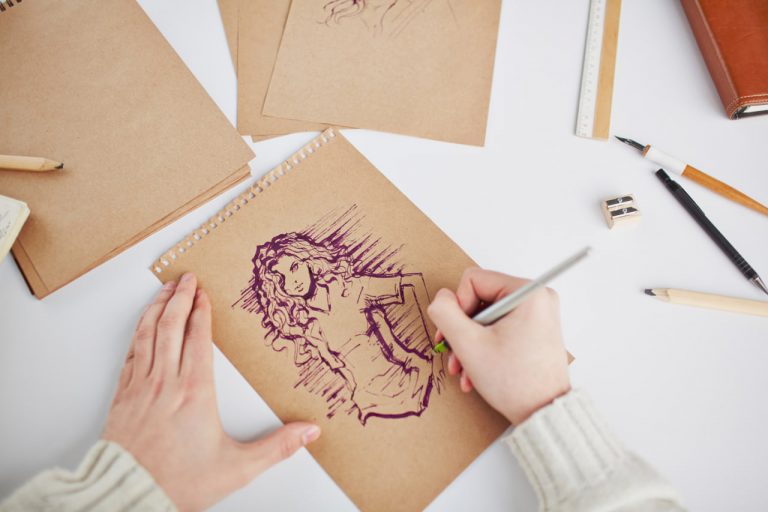One of the most effective ways to become a better artist is simple: draw more often, and draw with purpose. While regular practice is essential, doing the right types of exercises can make your progress faster, smoother, and more enjoyable. These targeted drawing exercises are used by beginners and professionals alike to improve hand control, observation, and creativity.
If you want to see real improvement without feeling overwhelmed, these seven drawing exercises will help you build core skills and confidence with every sketch.
Blind Contour Drawing
Blind contour drawing is a classic exercise that trains your eye and hand to work together. The rules are simple: look at your subject (not your paper) and draw it in one continuous line without lifting your pencil or peeking.
The result might look strange or messy, but the point isn’t perfection—it’s to focus deeply on shapes, edges, and details. This exercise helps build observational accuracy and forces you to slow down and truly see what you’re drawing. Doing this regularly can improve your line quality and attention to proportion.
Gesture Drawing
Gesture drawing is about capturing movement and energy rather than detail. Choose a figure, animal, or object in motion, and set a timer for 30 seconds to 2 minutes per sketch. Use fast, loose lines to express the overall posture, flow, or mood of the pose.
This is a powerful way to loosen up, fight stiffness, and understand how to simplify complex forms quickly. It’s especially useful if you want to draw people, animals, or action scenes later on.
Line Control Practice
Good line control is essential in every style of drawing, whether realistic or stylized. One helpful practice is to fill a page with lines, curves, circles, and shapes—focusing on making them smooth, clean, and intentional.
Try drawing straight lines without a ruler, evenly spaced lines, or spirals that stay consistent in size. You can also practice cross-hatching and shading gradients to control pressure. These simple drills improve hand stability and precision, making your sketches look cleaner and more confident.
Value Scale and Shading Gradients
Understanding value—how light or dark something is—adds realism and dimension to your drawings. One great way to practice is by creating value scales: draw a row of boxes and fill each one with a different level of shading from light to dark.
You can also practice smooth shading transitions by blending graphite or pencil pressure gradually across a shape. These exercises will train you to control tone, understand contrast, and give volume to your drawings without relying on outlines alone.
Drawing from Life
Drawing from life is one of the best ways to sharpen your observation and improve your accuracy. Choose simple everyday objects like a mug, plant, shoe, or piece of fruit. Set them in front of you and sketch what you see—not what you think it looks like.
Pay attention to light, shadow, proportions, and angles. Move slowly, take your time, and avoid rushing into detail. Drawing from real life helps develop a true understanding of form and space that photos alone can’t fully provide.
Upside-Down Drawing
This surprising technique trains your brain to stop making assumptions. Take a photo or reference image and turn it upside down. Then, draw it exactly as you see it—without turning the reference or your paper.
By removing the familiarity of the subject, your brain is forced to focus on pure shapes and lines rather than symbolic representations. This is a powerful way to break habits and see more accurately.
Timed Sketching Sessions
Set a timer for 10, 20, or 30 minutes and draw whatever you like—quick studies, imaginative doodles, or references. The goal isn’t a finished masterpiece but focused practice within a time limit. Timed sketching builds discipline, trains you to work efficiently, and helps reduce overthinking.
You can even combine this with other exercises like gesture drawing or life drawing to get the most out of your session. Challenge yourself to fill an entire page in that time.



